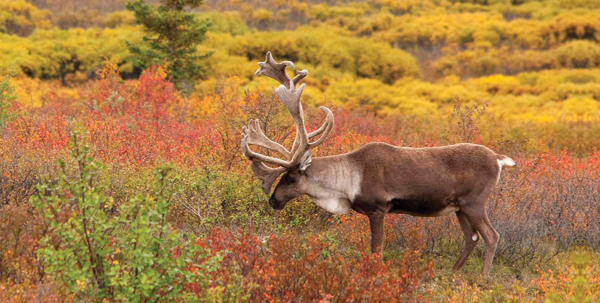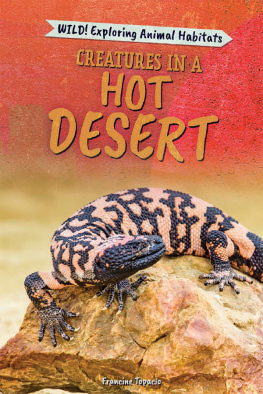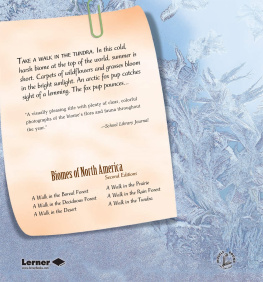Published in 2020 by The Rosen Publishing Group, Inc.
29 East 21st Street, New York, NY 10010
Copyright 2020 by The Rosen Publishing Group, Inc.
All rights reserved. No part of this book may be reproduced in any form without permission in writing from the publisher, except by a reviewer.
Copyright 2011; revised edition 2020
Editor: Elizabeth Krajnik
Book Design: Reann Nye
Photo Credits: Cover Dalia Kvedaraite/500Px Plus/Getty Images; series art VVadi4ka/Shutterstock.com; p. 5 Christopher Boswell/Shutterstock.com; p. 6 Adwo/Shutterstock.com; p. 7 Michele DAmico supersky77/Moment/Getty Images; p. 8 Tom Silver/Shutterstock.com; p. 9 Petr Simon/Shutterstock.com; p. 11 Jason Paige/500px Prime/Shutterstock.com; p. 13 tobiasjo/iStock / Getty Images Plus/Getty Images; p.14 Steve Boice/Shutterstock.com; p. 15 Vlada Cech/Shutterstock.com; p. 16 Marina Poushkina/Shutterstock.com; p. 17 Maria 81/Shutterstock.com; p. 19 Jeff Wendorff/500px Prime/Getty Images; p. 20 longtaildog/Shutterstock.com; p. 21 Kerry Hargrove/Shutterstock.com; p. 22 Gregory A. Pozhvanov/Shutterstock.com.
Library of Congress Cataloging-in-Publication Data
Names: Topacio, Francine, author.
Title: Creatures in the icy tundra / Francine Topacio.
Description: Revised edition. | New York : PowerKids Press, [2020] | Series: Wild! Exploring animal habitats | Includes index.
Identifiers: LCCN 2019010396| ISBN 9781725304406 (paperback) | ISBN 9781725304420 (library bound) | ISBN 9781725304413 (6 pack)
Subjects: LCSH: Tundra ecology--Juvenile literature. | Tundra animals--Juvenile literature.
Classification: LCC QH541.5.T8 T67 2020 | DDC 577.5/86--dc23
LC record available at https://lccn.loc.gov/2019010396
Manufactured in the United States of America
CPSIA Compliance Information: Batch #CSPK19. For Further Information contact Rosen Publishing, New York, New York at 1-800-237-9932.
TUNDRA BASICS
Tundra environments cover about one-tenth of Earths land. Arctic tundra is found mostly north of the Arctic Circle in parts of Norway, Sweden, Finland,Russia, Alaska, Canada, Greenland, and Iceland. Alpine tundra is found above the tree line on tall mountains.
Both types of tundra have a number of things in common. They have very low temperatures and a short growing season. Few kinds of plants and animals live in the tundra. The plants that do grow there are simple plants. Dead plant and animal matter provides nutrients for the animals that eat them. Tundra environments have large changes in the number of plants and animals from one year to the next.
Creature Corner
Tundra environments are harsh, or unpleasant,places. Only about 4 million people live in tundra environments around the world. Many of the people who live in the tundra are indigenous people.

The word tundra is Russian, but it comes from the Kildin Sami word tunter.
FREEZING AND THAWING
One thing that sets the Arctic tundra apart from the alpine tundra is permafrosta layer of frozen soil and dead plants. In most places, permafrost stays frozen year-round. In southern parts of the Arctic tundra, the top layer of permafrost, called the active layer, thaws, or warms and stops being frozen.


In the summertime, the shallow pools of water on the surface of the soil attract bugs such as mosquitoes, which then attract birds.
Even though the active layer thaws, the permafrost beneath it is too thick for plants roots to push through it. Large plants like trees cant grow without deep root systems. The thick permafrost also keeps water from being absorbed, or taken in. This is why the Arctic tundra has pools of water sitting on top of the soil in the summertime.
ANIMALS OF THE ARCTIC TUNDRA
Animals of the Arctic tundra are highly adapted to living in such a harsh environment. They are also adapted to raise their young quickly during the short summer. Mammals such as caribou and musk oxen have thick layers of fur and fat to keep them warm. Small mammals such as Arctic hares, lemmings, and voles burrow under the snow to stay warm. Others, such as the Arctic ground squirrel, hibernate to save energy, especially when there isnt enough food.


The Arctic tern migrates from Greenland to Antarctica and back each yeara 44,000-mile (71,000 km) trip. This is the longest migration of any animal in the world.Some scientists say that, during its roughly 30-year lifespan, the Arctic tern may travel about 1.5 million miles (2.4 million km).
However, not all Arctic animals live in the tundra year-round. Some animals, such as caribou and the semipalmated plover, migrate to warmer places during the coldest winter months.
BLENDING IN
Arctic foxes are masters of blending in. They have thick coats that change color with the seasons. In the winter, the Arctic foxs fur is white to blend in with the tundras snow and ice. In the summer, the Arctic foxs fur is gray or brown to camouflage, or hide, them against the muddy brown and green landscape.
In the summer, the Arctic foxs coat helps it hunt rodentssuch as lemmings, hares, and volesbirds, and fish. However, in the winter, many of the animals the Arctic fox eats arent around. Instead, they may follow polar bears and eat whatever is left of their kills.
Creature Corner
Arctic foxes have fur on the bottoms of their feet, short ears, and a short muzzle, or mouth and nose, to keep them warm in the winter. They also use their thick, bushy tail to guard them from the wind and snow.

Arctic foxes live in burrows and may dig a tunnel in the snow to stay warm during blizzards.Their coats keep them warm in temperatures as low as -58F (-50C).
LOTS OF LEMMINGS
Lemmings are small rodents with short bodies,legs, and tails, very round muzzles, and small eyes and ears. They also have long, thick, soft fur. Lemmings only live in parts of the Northern Hemisphere. Lemmings are solitary animals, which means they like living alone. They are active year-round and eat plants such as leaves, seeds, and grasses.
Lemmings have lots of babies very quickly. When this happens, lots of plants get eaten and the lemmings create a lot of waste, which helps other plants grow. It also means that there may be more animals that eat lemmings, such as Arctic foxes and snowy owls.
Creature Corner
Lemmings mate, or come together to make babies, from spring to fall. They carry their babies in their belly for 20 to 30 days and can have up to 13 babies at a time.





















